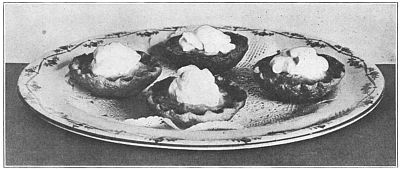Today’s article comes to us from a special edition of American Cookery dedicated to Thanksgiving Menus and Recipes. There is usually a catch when I discuss a book or a magazine, and this is no exception – for we turn to the November 1921 edition of the cookbook. Despite its age, most of the recipes would fit well on a modern dinner table. Because of the volume of pictures in the cookbook, I thought about choosing an appetizing recipe for The Emu Café and writing about it here. My plans were changed, however, when I stumbled upon a recipe for “coffee fruit punch” that left me equal parts confused and disturbed.
Coffee Fruit Punch?
When I was scrolling through the recipes, the word “coffee” caught my attention before “fruit punch.” Coffee is our greatest drink, and I carefully attend to preparing my coffee with a gooseneck kettle and Hario pour-over cone every morning. “Surely,” I thought, “a coffee recipe in a 1921 Thanksgiving cookbook should be interesting.” Then I saw fruit punch. Everything changed. Before continuing, you can find the recipe page here.
Dare I ask… How do you make “coffee fruit punch”?
The recipe for coffee fruit punch starts out innocuously enough, I suppose. “Add one-half a cup of fine-ground coffee to one cup of cold water, bring very slowly to a boil, and let simmer for ten minutes.” While I am not a fan of preparing coffee on the stove top, this part of the recipe is hardly revolutionary. Maybe things will not end too poorly.
A Fair Amount of Sugar
After simmering the coffee for ten minutes, one who hopes to enjoy a drink called “coffee fruit punch” should: “Strain, allow grounds to settle, decant, and add one cup of sugar.” One cup of sugar to one cup of coffee is certainly a ratio. All of my no-bake cheesecakes use one-third to one-half cups of sugar with 8 oz of cream cheese.
They Were Not Joking About the Fruit
When I read on to the next part of the recipe, I forgot about the large amount of sugar: “Mix one-half cup of sifted strawberry preserve with the juice of two lemons, the juice of three oranges and the grated rind of one, and half a cup of pineapple juice.”
Now I am deeply concerned. To be clear, we have not combined the coffee and the fruit mixture to create some noxious admixture. The absurdly sweet coffee and the fruit are separate and apart. We should all agree, I hope, that they should so remain. The idea of bringing these two things into contact is objectively horrifying.
Now in the interest of full disclosure, I must note that I do not like “fruity” tasting coffee at all, and eschew beans that are described as having a berry, citrus, or any other sort of fruity aftertaste. I know many coffee aficionados disagree with me on the fruity coffee issue, but I hope that we can find common ground on the coffee with fruit issue.

Our Worst Fears Are Realized
Similar to the coffee-half of the coffee fruit punch, our first instructions regarding the fruit mixture are acceptable: “Let the whole stand together for half an hour, then strain…” However, things then go down a dark path: “[A]dd the coffee, a quart or more of Vichy, or any preferred sparking water, and serve in tall glasses filled one-third full with shaved ice; garnish with a thin strip of candied angelica.”
From my perspective, this recipe, inserted among mostly good-looking recipes, seems like some kind of Thanksgiving cookbook Easter Egg – a special recipe for one’s most-hated loved ones. Perhaps it is an attempt at some kind of Thanksgiving economy – why serve coffee with fruit for dessert when you can serve fruit coffee? In any case, while I think that we can all find some interesting Thanksgiving recipe ideas in this book, no one should serve coffee fruit punch to their guests, much less contemplate the idea.
Cleansing the Pallet: A Recipe for Pumpkin Fanchonettes
Now that I trust everyone is sufficiently horrified by the coffee fruit punch, I will conclude this article with one of the many recipes in the American Cookery Thanksgiving Cookbook that look genuinely appetizing. Below, in its original form with a picture, is the cookbook’s recipe for Pumpkin Fanchonettes:
Mix together one cup and a half of dry, sifted pumpkin, half a cup of sugar, two eggs, two tablespoonfuls of molasses, one tablespoonful of ginger, two tablespoonfuls of melted butter, one teaspoonful of cinnamon, one-fourth a teaspoonful of salt, and one cup of rich milk. Pour into small tins lined with pastry, and bake about twenty-five minutes. Serve cold; just before serving decorate with whipped cream.
Recipe for pumpkin franchonettes from American Cookery

Come to think of it, in light of the fact that pumpkins are fruits, I must ask why American Cookery did not contemplate a dessert recipe involving coffee and pumpkin instead of coffee and orange. A dessert with coffee and pumpkins would have at least had a chance, and even if it was not good, might fall short of offending the senses. We can only wonder over some pumpkin fanchonettes.